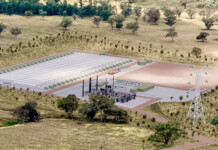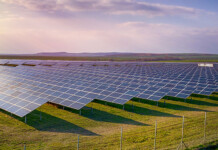By Phil Kreveld
Recasting the 1977 Mel Brooks film featuring the Institute for the Very, Very Nervous.
The Australian Energy Market Operator (AEMO) is very, very nervous—and understandably so, because everyone outside the organisation assumes that it has a tight grip on the renewable transition. Arrythmia, fibrillation, and cardiac failure in the national electricity grid’s ‘electricity heartbeat’ as referred in AEMO’s draft draft Integrated Systems Plan is the cause for its anxiety.
Meanwhile the Commonwealth Government and His Majesty’s loyal opposition are belting each other around the ears with myopic arguments devoid of facts. The latest politically-inspired skirmishes caused by the Australian Energy Regulator-approved electricity price rises comprehensively miss the essential deficiencies in the design of our national electricity system.
High anxiety about the security and stability of the electricity system has us over-investing, and thus paying excessive insurance premiums ‘to be sure, to be sure’. The painful thing is that we’re hazy whether the overspending will calm the anxiety of AEMO. It’s easy to point at ‘security blanket’ transmission projects like EnergyConnect, Hume and Orana links, and CopperString. They are massive investments—and part of overspending in essence for ‘belts and braces’ fixes.
Related article: Sailing between Scylla and Charybdis: the renewables Odyssey
The unnerving aspect of all this is that, in spite of the cautiousness of AEMO in connecting new generation, it doesn’t know how to operate a 100% renewable grid. There is no shame in that, because no one else does either. And it is not surprising, because with the exception of AEMO, which kind of exercises some supervision, there is no central engineering taking place.
In the absence of a global engineering plan—more about this further down—‘belts and braces’ decisions are being made. They could prove to be the wrong ones—or only partially applicable. Take the latest ‘wrinkle’ in which Transgrid is seeking underwriting support for the acquisition of $600 to $700 million in synchronous condensers (syncons) for EnergyConnect and Humelink. Dwell on the logic behind this request. We are getting rid of synchronous generation because of Chris Bowen’s fixation about ‘no gas’ in his Capacity Investment Scheme—and then we’re piling on synchronous condensers—basically the same animal as a synchronous generator. Ultimately those investment decisions find their way to consumers’ pockets.
Nor is there recognition of the grid security spectre which has the Australian Energy Market Operator in a permanent state of high anxiety regarding grid stability. That makes for a lot of expenditure in synchronous condensers as a talisman response to ward off evil spirits of grid instability—similarly, delays in connection of new generation but then followed by very questionable investment in synchronous condensers at 40-million bucks a pop and rising.
Then there is the ‘no transition without transmission’ hymnal, which now sees the Clean Energy Finance Corporation singing in harmony with Transgrid and getting an adequate financial return on diminishing transmission power flows, courtesy the deepening duck curves of distribution networks. Marginal energy costs might oft be headed to zero but consumers will in essence pay the transmission owners irrespectively—and for grid augmentation, like syncons.
Why is AEMO nervous? It is because of loss of grid strength and—they think—the harm that voltage and power oscillations cause as a result. Voltage and frequency have never been rock-solid, and it is arguable that solar farms in the north west of Victoria, contributing voltage oscillation at 2%, or less, differ much from the time there were no solar farms connected to that grid link. Shoving in a syncon, will certainly improve grid strength, and possibly reduce voltage oscillation to 1%—but, so what?
The real question that remains unanswered is whether AEMO actually knows how to manage a complete system of only solar and wind and batteries with whatever level of oscillation. The moment you connect up a bunch of generators on long transmission lines, with distributed load centres, here and there, you harvest oscillations! They are practically speaking, unavoidable irrespective of whether we are dealing with classical synchronous generation or newer, inverter-based generation.
Grid strength is a term tossed around to underpin often specious arguments by the semi-informed to impress the uninformed. How could anyone be against grid strength? And, indeed, availability of large short circuit current when a fault occurs is useful for the reliable operation of circuit breakers and reclosers. But that is only one feature of grid operation. And in the absence of large short circuit current, differential relaying can take over. AEMO talks about grid strength in terms of preserving ‘beautiful’ sinewave appearances of voltage throughout the grid. It has a poetic appeal but is of no real practical use as waveform distortion has always been a feature of alternating current systems.
As to belt and braces beefing up grid strength at points of connection of remote solar and wind farms, this is an expensive hobby, shared between generation plant owners and the transmission folk. Admittedly, as line impedance increases the phase locked loop (PLL) of inverters have increasing difficulty in following the line voltage. However, inverter manufacturers are working on this within the UNIFI consortium. Also—and this is not recognised in grid strength considerations—a large short circuit ratio at a farm point of connection, is no guaranty for PLL stability because short circuit ratio is an inversely proportional to line impedance and directly proportional to the over-current capacity of generators connected at the far end.
A syncon is useful in:
- Providing short circuit current
- Inertia
- Reactive power voltage support.
These features can also be provided by, for example, battery supported inverters but only if we were able to accommodate suitable market structures. By increasing the power rating of inverter semiconductor switches and over-rating the battery, syncon conditions could be met. A syncon consumes energy, something of the order of 2-3% of its power rating; over-rating the battery-inverter combo might result in 26-30% energy utilisation—but, so what if its investment proves to be less than that needed for a syncon, Of course, we would have to somehow amortise the investment by means of a suitable market mechanism.
Precisely because we embarked on the transition journey without a detailed tour guide pointing out the best places, we are meandering along and bumping into problems that could have been foreseen. For example, instead of straining the world’s supply of synchronous condensers, the national grid could be built on the basis of grid strength supporting battery-inverter combos, with everyone else running phase-locked loop inverters furnishing the bulk of the national demand for energy.
The operation of an alternating current network requires the supply of reactive power demanded by load centres and the connecting transmission lines. With synchronous machines this is less of a problem than with inverter-based resources as these are severely current limited by comparison, Synchronous condensers at points of connection of renewable generation have to be over-rated for reactive power and furthermore the additional compensation current reduces the useful power varying capacity of transmission lines.
Precisely because the national grid is ‘growing like Topsy’ the opportunity to place reactive voltage support in the most cost-effective ways are slipping by. What we do have is the rigid rulings of the Australian Energy Market Commission (AEMC) as to how to apportion the costs of synchronous condensers. We are not even looking at the other ways of designing voltage support as for example the 50Hertz German grid which is using voltage forming inverters in combination with static synchronous compensators and var compensators.
Related article: A kind of knitted electricity system
It is clear AEMO has decided that in order to control the south-east coast grid, terminal stations feeding distribution networks must be net importers of power—hence its order that various large batteries must be in discharged state at the commencement of daylight hours—more evidence of ‘Topsy’ thinking. There is no doubt that unloaded transmission lines present a voltage control problem, particularly long lines of several hundred kilometres or longer. Not only they require very high charging current, if they have been de-energised, but in lightly loaded condition, Ferranti voltage rise due to self-capacitance, requires the use of shunt reactors to control voltage within acceptable limits. Why are we therefore pursuing the ‘no transition without transmission’ song sheet? An obvious solution would have us install battery-voltage forming inverters at terminal stations, further extending energy independence of distribution networks—and providing a virtual extra circuit to existing transmission lines, However, AEMO is already nervous enough, not to want to have to devise new control schemes—the more because it would have to go to the AEMC with rewriting of the national electricity rule book.
Notwithstanding the foregoing, nothing can alleviate anxiety of AEMO even if distribution networks remain net importers of energy. And here’s why: Tellegen’s theorem will trip them up, i.e., summed instantaneous power inflow and outflow, and reactive power inflow and outflow will always be zero and that makes for nightmare scenarios since AEMO does not have instantaneous visibility of its networks! Given short-term variations due to climatic fluctuations, new control algorithms are needed—a world first! And/or a first ever-for Australia, a whole-of-system engineering plan.







